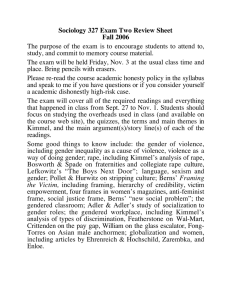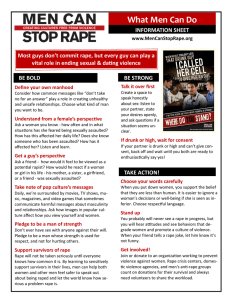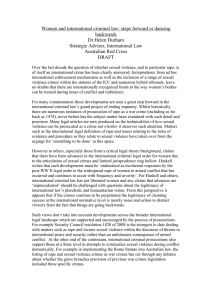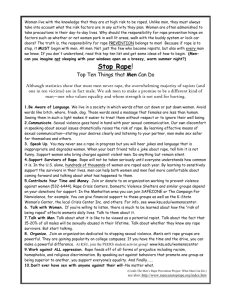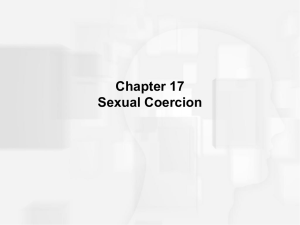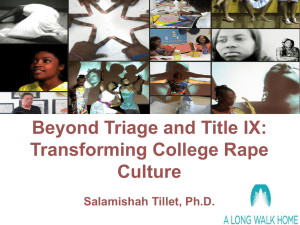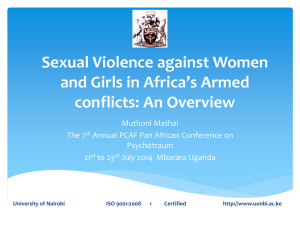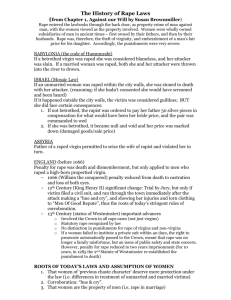Herstory – Power Point
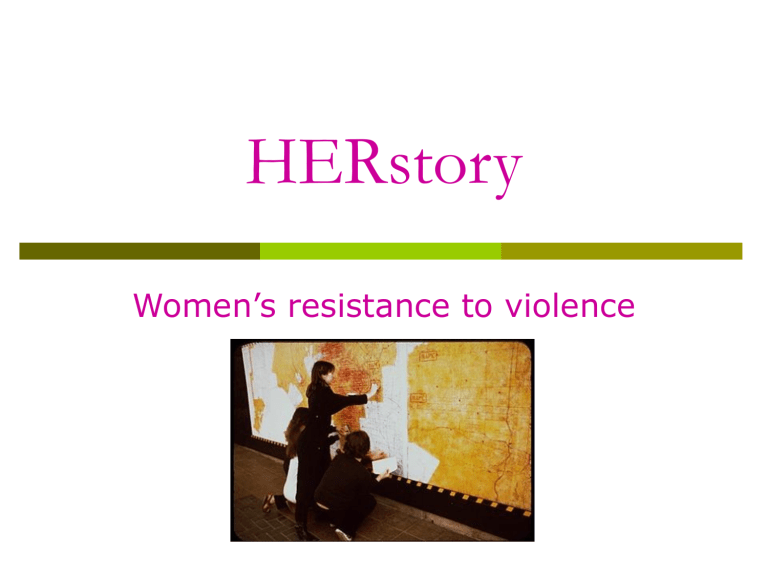
HERstory
Women’s resistance to violence
Hundreds of years ago
The origins of the word rape are found in ancient
Greece: to steal.
England: (beginning 1154), women were allowed to bring suit against their rapist as long as they were not married to him and were virgins.
It was also during the reign of Henry II that defenses against rape were developed.
England: (beginning 1307), rape laws acknowledged that a non-virgin woman could be forcibly raped, but only by a non-spouse.
Colonization
White Europeans bring sexual violence against Native women.
African women enslaved were often raped by white men. Black men accused of raping white women lynched.
Memphis Riot of May 1866.
First Wave
In 1848 the first Women’s Rights
Convention was organized.
Sojourner Truth’s legendary declaration
“Ain’t I a Woman?” in 1851.
Temperance movement
Ida B. Wells takes leadership roles in organizing anti-lynching campaigns.
Second Wave
1970’s
Civil Rights, Gay Rights and Anti-War
Movements
Women began a formalized response to
SA and DV
Re-frame sexual and domestic violence as a societal problem rather than personal
Early rape crisis centers
Self-defense classes
“Take back the night” marches
Second Wave
1980’s
Rape became a topic for academic research
Limited federal and state funding became available to programs.
Pervasiveness of child sexual abuse and acquaintance rape began to be exposed.
Legislative change: criminalization of marital rape in most states
First civil suit was won by a battered woman,
Sexual harassment was declared illegal
Professionalization and Legitimization
1990’s
Backlash began in the 1980’s
National and statewide organizations
Violence against women declared as a human rights violation by the UN
Congress passed the Violence Against
Women Act in 1994
Court supported programs to treat sex offenders and batterers increased.
Progress
2000’s
Rape survivors sexual history cannot be used to discredit them in court.
Acquaintance rape has gained greater visibility.
Rape crisis centers are still standing.
Laws continue to change in favor of survivors.
Men’s assumption of power over women has been challenged.
Survivors have greater resources.
Sexual assault rates have declined in recent years.
Pushed to the margins
Mainstream feminism did not work for all women, particularly for women of color.
Middle-class white women driving this political activism.
Women are still blamed for the violence they suffer.
Our media continues to showcase violence and sexism.
So what?
What implications does this have for YOU as advocates?

